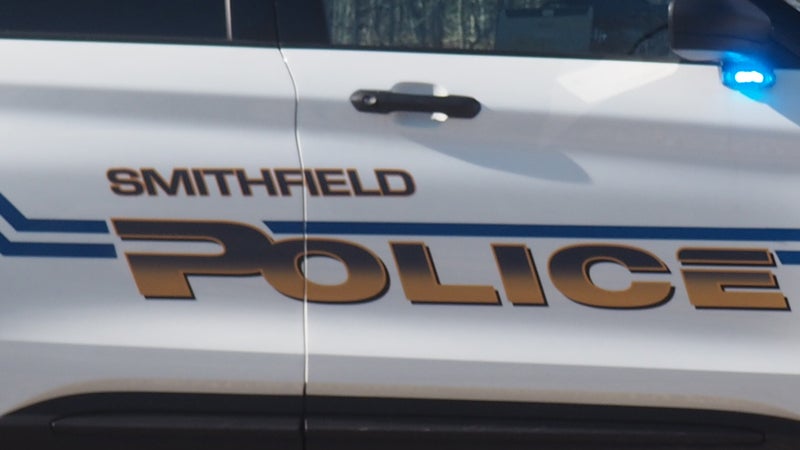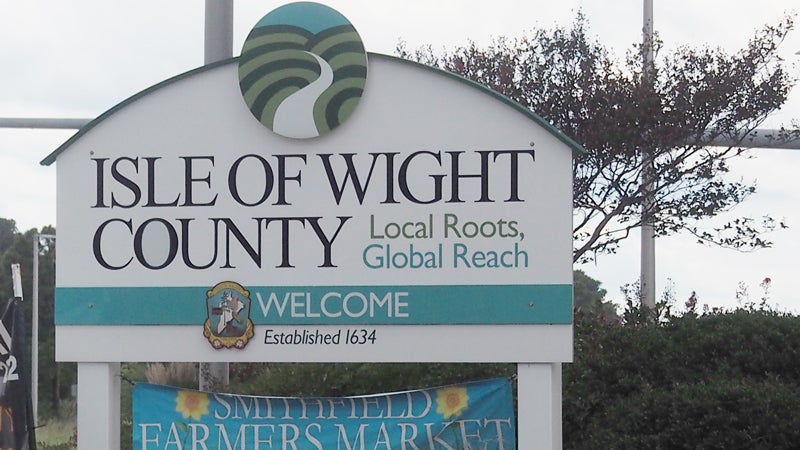Missing pre-Civil War Surry court records found
Published 4:00 pm Friday, January 10, 2025

- Surry Clerk of Circuit Court Thomas Mayes in 2024 found pre-Civil War Deed Book No. 10, which had been missing for much of its existence. (Photo courtesy of Thomas Mayes)
A pre-Civil War book of Surry County’s land ownership records has been lost for most of its existence.
In 1839, someone broke into Surry’s clerk of circuit court office and removed Deed Book No. 10, which contained five years of handwritten land transfer records dating back to 1834.
To this day no one knows who took it. A circa-1839 court order states only that “the clerks’ office of this court was forcibly entered” the night of April 8 of that year “by some person or persons as yet unknown, and the book in which deeds have been recorded from November 1834 to the 25th of March 1839 stolen therefrom.”
According to Surry’s current clerk of court, Thomas L.S. Mayes, the book had been returned by 1869 when it turned up in inventory during an audit, only to disappear again, this time for more than a century.
The next person to lay eyes on the missing deed book was Ransom B. True, a doctoral student at the College of William and Mary who by 1983 had earned his degree and cited pages 195 through 197 of the book in an academic paper on Surry’s 17th century Smith’s Fort Plantation.
True wrote that the missing deed book had “rested hidden in the depression at the very top of the cabinets in the clerk’s office until it was found within the past year.” By the time he saw it, the book was “very much mutilated and defaced apparently from exposure to weather, so that the breaker portion of it is illegible” and had “suffered from heat and may once have been through a fire.”
The book disappeared for a third time shortly after True’s encounter and remained missing for another 41 years.
“It was a mystery,” Mayes said, one that he’s been determined to solve for more than a decade.
Mayes, the 11th great-grandson of Francis Clements, who was clerk of court in Surry from 1697 to 1708, has long been fascinated by history. In 2006, based on that lineage, he joined the Jamestowne Society, an organization of descendants of Jamestown’s pre-1700 settlers.
In 2023 he followed in his ancestor’s footsteps when he stood for election and won a four-way race to become Surry’s clerk of court.
Several months after taking office he found Deed Book No. 10 inside a taped cardboard beverage box in a sealed file cabinet alongside its companion court order book from the 1830s.
The find completes Surry’s collection of land ownership records dating back to the county’s 1652 founding. Now, he faces the challenge of preserving the deteriorating book and ensuring it never goes missing again.
In November he received a $24,000 grant from the Jamestowne Society that will cover just over half of the nearly $46,000 cost he was quoted in a June conservation proposal by Greensboro, North Carolina-based HF Group. It’s the same company the Library of Virginia uses to preserve its rarest books and documents.
According to the proposal, the book is now unbound and has suffered extensive damage, including heavy staining and some areas of scorching.
“The iron gall ink manuscript has faded to varying degrees in the stained areas,” the proposal states.
Mayes said the deed book has already been sent to Greensboro to begin the conservation process, which he said will entail placing each page in a solution that will deacidify it. From there, the pages will be scanned and then encapsulated in polyester sleeves.
“Early books used acid ink that could burn through both sides of the paper,” Mayes said. “That neutralizes the acid in the ink.”
He’s planning to travel to Greensboro by the end of January to view HF Group’s progress in preserving the 500-page tome.
The proposal calls for not only preserving the original pages but also creating a replica book that the public can view.
“When we get it back we’ll end up with another book that looks just like it,” Mayes said.
Mayes said just prior to Thanksgiving he received an additional $10,000 contribution from the Virginia Daughters of the American Revolution, leaving him just over $13,000 shy of the funding needed to complete the proposal.
“The remaining $13,000 will be sought after the first of the year from any historical organizations that would support the endeavor,” Mayes said.




